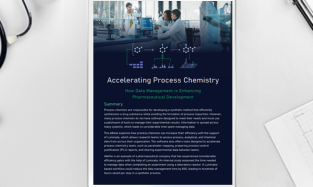Increasing efficacy in extractables and leachable testing
Posted: 3 October 2023 | Catherine Eckford (European Pharmaceutical Review) | No comments yet
Researchers have proposed a read-across methodology for pharmaceutical extractables and leachable (E&L) testing as a time-saving alternative to toxicity testing.


A paper published in Regulatory Toxicology and Pharmacology has proposed a consistent, health protective read-across methodology for extractables and leachables (E&Ls).
The Extractables Leachables Safety Information Exchange (ELSIE)’s safety team developed the methodology for generating permitted daily exposures (PDEs) for E&Ls.
Current challenges in extractables and leachable studies
According to the paper, a challenge for E&L read-across is that most toxicology data is from the oral route of administration. Comparatively, the parenteral route is very common for the leachable HBEL derivation. The authors stated that a difficulty in E&L studies is when there are data gaps with toxicology data and exposure exceeds existing safety thresholds.
It is not advisable to conduct experimental in vivo testing for all leachables with data gaps in toxicity data due to considerations such as the necessity of limiting animal testing and time constraints, the authors wrote.
In cases where no or limited toxicological data exists for E&Ls, data gap-filling by read-across to surrogate structures with toxicological data provides an alternative method for determining a PDE. Therefore, read-across is an approach that leverages relevant information from analogs, according to the paper.
However, a key advantage of read-across is that it mainly uses a computational approach. Consequently, this reduces the number of animals used for toxicity testing by and/or allowing the toxicologist to leverage historical in vivo toxicology data available in literature for the target compound or structurally similar compounds, the authors stated.
Method and results
Positively, Masuda-Herrera et al. reported that the advantageous capabilities of the framework are useful for deriving health-based exposure limit (HBELs) when toxicology data is limited. The paper highlighted the effectiveness of this proposed methodology for E&Ls in two case-studies.
This framework was tested against 73 compounds with oral bioavailability data and oral to parenteral extrapolation factor using physical chemical data.
According to the researchers, the framework was developed based on survey data collated from 11 pharmaceutical companies on their perspectives on current E&L practices, read-across approaches, and regulatory experience.
Findings from the survey showed that the predicted bioavailability was conservatively greater than or equal to the experimental bioavailability 79 percent of the time, the paper noted.
E&L survey on current industry practises – results
The survey sought feedback from ELSIE member companies and found that nine of 11 participants use a read-across approach when a PDE is required to support an E&L risk assessment for a compound with a limited dataset. Conversely, the companies who did not use this approach “either had not needed to derive a PDE or used a purely computational approach for the target compound without implementing read-across”.
Overall, the survey established that most participants have not conducted in vitro or in vivo toxicology studies as part of QC procedures, to address gaps in data for the purpose of an E&L toxicology.
In relation to low-level E&L impurities, a read-across methodology can be applied to any route of exposure using bioavailability data to determine a bioavailability modifying factor for route extrapolation. Masuda-Herrera et al. concluded that it is a faster approach compared to toxicity testing.
Related topics
Biopharmaceuticals, Drug Development, Drug Safety, Impurities, Packaging, QA/QC, Research & Development (R&D), Therapeutics, Toxicology









